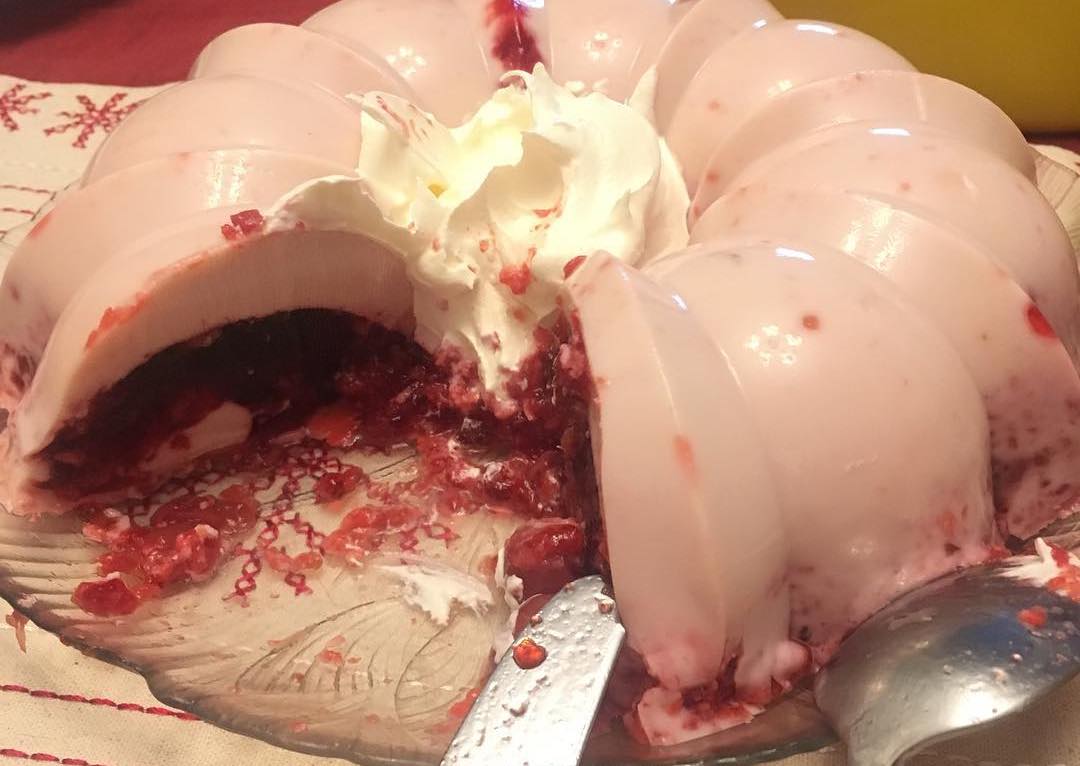Forget walking a mile in someone else’s shoes! Our favorite way to relate to folks in the past is through the foods they were eating, which often come to us courtesy of vintage recipes. But sometimes, learning what people ate back in the day mainly serves to remind us just how different things are now, as Twitter user and contributing editor to The Atlantic, Lizzie O’Leary, discovered recently.
When O’Leary found a cookbook with the extremely specific title Atlanta Natives’ Favorite Recipes, which was published in 1975, the foods described within were too good — by which we mean weird — to keep to herself. O’Leary went to the same place we all head to when we have an urgent discovery we have to dish on: her 51.9K Twitter followers. Her main focus was the salads, which by today’s health-conscious standards play fast and loose with the concept. But there was one extremely strange ingredient binding them all together, and that ingredient is… gelatin!
Here’s the tweet that started it all:
And just in case you thought we’d left Coca-Cola salad in the ’70s, here’s one in the wild from December 2018:
Next up, this recipe dedicated to the Sunshine State combines the tropical flavors of lime, lemon, orange, and avocado with… cottage cheese and mayo?
Here’s a visual to help you picture it (you’ll have to conjure up the taste on your own):
And if you thought gelatin was just for dessert, this next entry will broaden your taste horizons in new, horrifying ways:
Er, tomato soup-flavored jelly? Hard pass.
This wasn’t the only crime being committed against potatoes, by the way:
Another gelatin-encased flavor combination: pineapple, lime, olives, pimento cheese, celery, and walnuts.
It would have looked vaguely, disturbingly like this:
One of the major ingredients of these salads, other than gelatin and sadism, is pineapple, which finally gets its moment in the spotlight here:
Sounds like a recipe for digestive disaster.
This mini collection has got people questioning the real meaning of the world ‘salad’:
This might be a generational thing:
I can hear my family talking about every one of these. My dad was particularly impressed once by a salad lemon gelatin, beef, and lettuce(?!). Me: if it has Jell-O in it, it’s not a salad. Him: pic.twitter.com/WWhiAjj0Xy
— Nicole Pittman (@ndpittman) June 23, 2019
Which explains why this walk down memory lane has got some people refereeing a match between their nostalgia and their tastebuds:
Meanwhile, some people are practically connoisseurs:
There is a long, sacred tradition of jello & mayo based salads. 1 of my faves involves cottage cheese & red gelatin. Another involves tiny pasta & marshmallows. Then there's the 1 w/ carrots & celery... https://t.co/cwBtH6NAJy
— Dr Lucal (@BetsyLucalPhD) June 23, 2019
So, where did these salads start?
Well, gelatin pioneers Jell-O first wiggled their way into America’s kitchens in the early 1900s, when better-paid factory jobs were drawing away the people who would normally work as cooks, leaving middle class housewives to do more of the cooking themselves. (Apparently it never occurred to their husbands to help out.)
For the next 70 years, Jell-O sold themselves as an easy way to feed a family, the idea being that you can add anything to Jell-O and not only does it look cool while it’s suspended in weird half-liquid, half-solid matter, but it also tastes delicious. (That was the theory, anyway.)
Or maybe there was an ulterior motive…
Jell-O wasn’t the only ones bouncing up and down for gelatin salads — someone had to provide all that mayo:
In case you were wondering, some people are keeping the tradition alive and well to this day:
It’s fascinating to see just how well Jell-O’s marketing ploy worked, but we’ll be keeping our leafy salads separate from our plain old fruit Jell-O — no mayo, pineapple, or tuna allowed.

